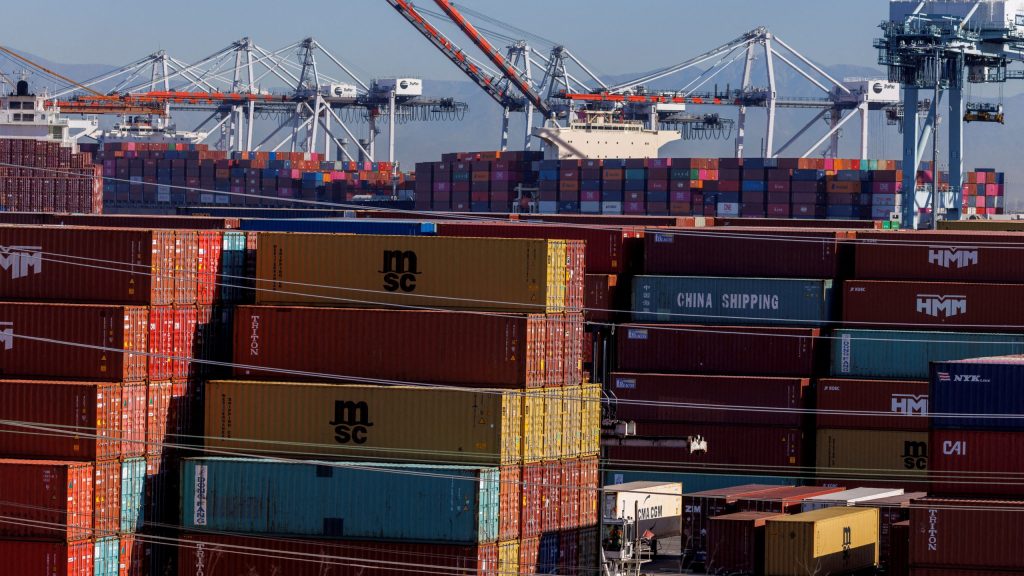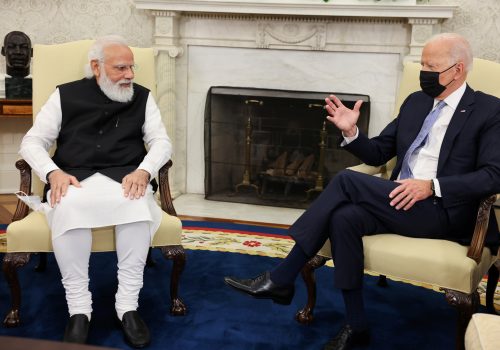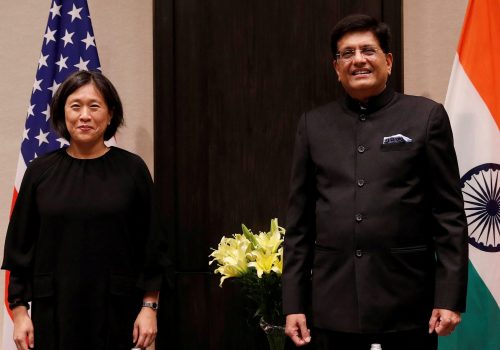Tectonic shifts, whether geological or economic, can create new global landscapes. Such a transformation has been underway in international trade in recent decades—with the multilateral system losing its shine and its antithesis, preferential free-trade agreements (FTAs), now ascendant.
When I was first earning my stripes as a trade negotiator in the 1990s, global commerce was much more non-discriminatory. For instance, the United States could count on getting equal-tariff status in other markets according to World Trade Organization (WTO) rules on most-favored-nation (MFN) treatment. But the world has increasingly dumped that norm. Instead, countries that are active in negotiating FTAs benefit by agreeing to lower tariffs between each other, while the rest miss out unless they negotiate their own FTAs. WTO rules allow these discriminatory arrangements so long as an FTA covers “substantially all trade” between trading partners.
From the outset, the Biden administration made it clear that it won’t be negotiating FTAs, focusing instead on domestic priorities in the wake of COVID-19. Statements from the administration since then have continued to demur on when, if ever, it will change this position. As a result, American exports could suffer across a variety of sectors, from manufacturing to agriculture, because the United States is not bargaining for its own special tariff deals through new FTAs with trading partners.
But there is one alternative that could help mitigate some of the pain: the US Generalized System of Preferences (GSP) program.
As Ed Gresser of the Progressive Policy Institute—and formerly a colleague of mine at the Office of the US Trade Representative (USTR)—laid out recently, the US GSP program offers preferential tariffs to developing countries (as another exception to the WTO’s MFN requirements) but also serves American interests through qualification criteria laid out in US legislation. And GSP matters to developing countries, which is why USTR previously has been effective in achieving US priorities in areas such as labor reform and intellectual property-rights protection in exchange for providing GSP tariff treatment to these countries.
To be sure, neither FTAs nor other forms of preferential trade arrangements, such as GSP, are a substitute for a genuinely non-discriminatory global trading regime. As I wrote recently, it’s important to recognize the WTO’s institutional strengths, which have endured despite years of severe underperformance in negotiating new multilateral results. But Russia’s invasion of Ukraine is clearly an historic turning point: Hopes for long-sought new WTO agreements at the organization’s twelfth Ministerial Conference meeting in June (which has been delayed for over three years now) are endangered by expected showdowns over responses to the war.
This disruption in geopolitical and economic structures poses existential risks for the WTO and the global, open-market approach it embodies.
Turning away from FTAs
In this new reality, nations appear to be doubling down on a “beggar-thy-neighbor” approach by prioritizing managed trade, domestic production, and preferential relationships over the common global good through economic liberalism as epitomized in the WTO.
US President Joe Biden’s position on FTAs sets him apart from both the global mood and his predecessors—who often criticized agreements concluded by previous administrations (particularly when the other party was in the presidency), but eventually initiated their own updated and improved preferential trade deals. The implications of his approach are significant, especially as the global trading system continues its metamorphosis to a “spaghetti bowl” (a term coined by Columbia University professor Jagdish Bhagwati in 1995) of bilateral and regional preferential-trade agreements with competing strands of trade rules and tariff treatment. It signals that there will be no US engagement on the premier mega-regional trade agreement, the Comprehensive and Progressive Trans-Pacific Partnership (CPTPP), at least until after the midterm elections in November.
There are well-founded arguments for Biden’s policy. The politics of the CPTPP are simply too difficult for the moment, and the basic model is rejected by progressives and deemed as passé by the current leadership in the USTR. Yet this is very unfortunate, since US exports lose out as Washington’s trading partners negotiate their own agreements—providing each other better treatment than they do to the United States. If anything, the playing field for trade has become less level, and the US allergy to FTAs threatens to make it even worse.
Those most active in negotiating FTAs in the last two decades (such as the European Union, Japan, Australia, and Canada) enjoy much lower tariffs than those applied under MFN status to US exports. The United States has its own FTAs, including its largest, by value of trade, with the US-Mexico-Canada Agreement (USMCA, formerly NAFTA) and the Korea-US Agreement; but these cover a smaller percentage of US trade than is the case for Canada, for example. Ironically, FTA negotiations—while undermining the WTO’s non-discriminatory principles—have been the best tool for the United States in pressing a broader values-based agenda globally, such as commitments on labor rights and environmental protection.
Gear up for GSP
If the United States is to chip away at its degraded access to other markets, it must embrace the alternatives to new FTAs—at least until the Biden administration sees the light and reverses its position.
The GSP program offers a partial answer. Many developed countries operate their own GSP programs to help developing countries climb up the economic ladder by offering them more access to their markets. US GSP expired at the end of 2020, and Congress is now considering its renewal through high-profile legislation related to China. As Gresser highlights, GSP reauthorization has generated debate over the scope of proposed criteria that apply to developing country beneficiaries related to labor, human rights, and environmental protection. Historically, the GSP program has been important in promoting improvements in these areas in developing countries. What hasn’t been highlighted as much, however, are the criteria in the program relating to access for US exports to these markets.
India presents one of the best examples on this point. The USTR suspended India’s GSP benefits in 2019 during the Trump administration over complaints about India restricting its market for US exports. But once GSP is reauthorized by Congress, the Biden administration could dangle the prospect of reinstating India’s GSP benefits in exchange for New Delhi addressing US concerns by providing access for US exports in key sectors.
The GSP program is not a perfect solution for addressing US trade priorities, including those with India and other major developing countries. But the prospects of the WTO returning to its roots and negotiating freer global trade flows are dim. And since the political costs currently seem too high for a US negotiation of new FTAs, GSP could serve as a vital tool in addressing US export interests for the foreseeable future.
Mark Linscott is a nonresident senior fellow at the Atlantic Council’s South Asia Center and the former assistant US trade representative for South and Central Asian affairs, and WTO and multilateral affairs.
Further reading
Wed, Oct 6, 2021
Trade could transform US-India ties
New Atlanticist By Mark Linscott
Washington and New Delhi need a joint vision for a deeper, broader, and more integrated economic relationship.
Tue, Jan 11, 2022
Here’s how to get US-India trade on the right track
New Atlanticist By Mark Linscott
Both countries need to be vocal about their goals—but also realistic in their expectations.
Thu, Apr 7, 2022
In Argentina, the IMF risks placing geopolitics over economics
New Atlanticist By
The IMF’s decision to approve another loan to help Argentina's troubled economy sets a dangerous precedent that the fund might come to rue.
Image: Containers are stacked as ships unload their cargo at the Port of Los Angeles on November 22, 2021. Photo by Mike Blake/File Photo/REUTERS



